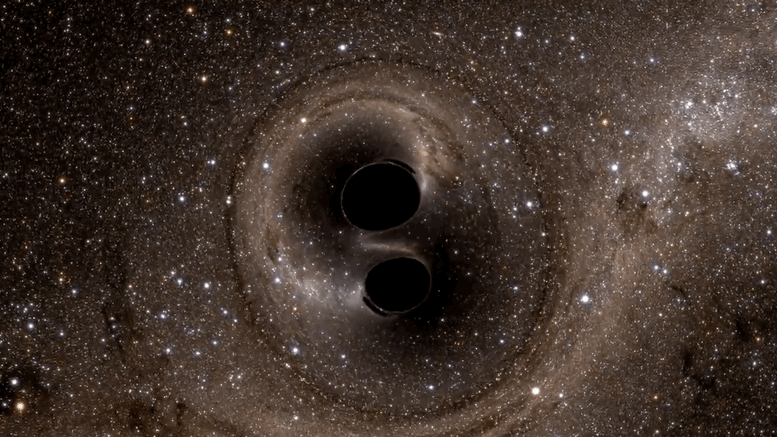
This computer simulation shows the collision of two black holes, which produces gravitational waves. Credit: SXS
“By expanding our pulsar timing array over the next 10 years or so, there is a high likelihood of detecting gravitational waves from at least one supermassive black hole binary.”
One of the most spectacular achievements in physics so far this century has been the observation of gravitational waves, ripples in space-time that result from masses accelerating in space. So far, there have been five detections of gravitational waves, thanks to the Laser Interferometer Gravitational-Wave Observatory (LIGO) and, more recently, the European Virgo gravitational-wave detector. Using these facilities, scientists have been able to pin down the extremely subtle signals from relatively small black holes and, as of October, neutron stars.
But there are merging objects far larger whose gravitational wave signals have not yet been detected: supermassive black holes, more than 100 million times more massive than our Sun. Most large galaxies have a central supermassive black hole. When galaxies collide, their central black holes tend to spiral toward each other, releasing gravitational waves in their cosmic dance. Much as a large animal like a lion produces a deeper roar than a tiny mouse’s squeak, merging supermassive black holes create lower-frequency gravitational waves than the relatively small black holes LIGO and similar ground-based experiments can detect.
“Observing low-frequency gravitational waves would be akin to being able to hear bass singers, not just sopranos,” said Joseph Lazio, chief scientist for NASA’s Deep Space Network, based at NASA’s Jet Propulsion Laboratory, Pasadena, California, and co-author of a new study in Nature Astronomy.
To explore this uncharted area of gravitational wave science, researchers look not to human-made machines, but to a natural experiment in the sky called a pulsar timing array. Pulsars are dense remnants of dead stars that regularly emit beams of radio waves, which is why some call them “cosmic lighthouses.” Because their rapid pulse of radio emission is so predictable, a large array of well-understood pulsars can be used to measure extremely subtle abnormalities, such as gravitational waves. The North American Nanohertz Observatory for Gravitational Waves (NANOGrav), a Physics Frontier Center of the National Science Foundation, is one of the leading groups of researchers using pulsars to search for gravitational waves.
The new Nature Astronomy study concerns supermassive black hole binaries — systems of two of these cosmic monsters. For the first time, researchers surveyed the local universe for galaxies likely to host these binaries, then predicted which black hole pairs are the likeliest to merge and be detected while doing so. The study also estimates how long it will take to detect one of these mergers.
“By expanding our pulsar timing array over the next 10 years or so, there is a high likelihood of detecting gravitational waves from at least one supermassive black hole binary,” said Chiara Mingarelli, lead study author, who worked on this research as a Marie Curie postdoctoral fellow at Caltech and JPL, and is now at the Flatiron Institute in New York.
Mingarelli and colleagues used data from the 2 Micron All-Sky Survey (2MASS), which surveyed the sky from 1997 to 2001, and galaxy merger rates from the Illustris simulation project, an endeavor to make large-scale cosmological simulations. In their sample of about 5,000 galaxies, scientists found that about 90 would have supermassive black holes most likely to merge with another black hole.
While LIGO and similar experiments detect objects in the final seconds before they merge, pulsar timing arrays are sensitive to gravitational wave signals from supermassive black holes that are spiraling toward each other and will not combine for millions of years. That’s because galaxies merge hundreds of millions of years before the central black holes they host combine to make one giant supermassive black hole.
Researchers also found that while bigger galaxies have bigger black holes and produce stronger gravitational waves when they combine, these mergers also happen fast, shortening the time period for detection. For example, black holes merging in the large galaxy M87 would have a 4-million-year window of detection. By contrast, in the smaller Sombrero Galaxy, black holes mergers typically take about 160 million years, offering more opportunities for pulsar timing arrays to detect gravitational waves from them.
Black hole mergers generate gravitational waves because, as they orbit each other, their gravity distorts the fabric of space-time, sending ripples outward in all directions at the speed of light. These distortions actually shift the position of Earth and the pulsars ever so slightly, resulting in a characteristic and detectable signal from the array of celestial lighthouses.
“A difference between when the pulsar signals should arrive, and when they do arrive, can signal a gravitational wave,” Mingarelli said. “And since the pulsars we study are about 3,000 light-years away, they act as a galactic-scale gravitational-wave detector.”
Because all supermassive black holes are so distant, gravitational waves, which travel at the speed of light, take a long time to arrive at Earth. This study looked at supermassive black holes within about 700 million light-years, meaning waves from a merger between any two of them would take up to that long to be detected here by scientists. By comparison, about 650 million years ago, algae flourished and spread rapidly in Earth’s oceans — an event important to the evolution of more complex life.
Many open questions remain about how galaxies merge and what will happen when the Milky Way approaches Andromeda, the nearby galaxy that will collide with ours in about 4 billion years.
“Detecting gravitational waves from billion-solar-mass black hole mergers will help unlock some of the most persistent puzzles in galaxy formation,” said Leonidas Moustakas, a JPL research scientist who wrote an accompanying “News and Views” article in the journal.
Reference: “The local nanohertz gravitational-wave landscape from supermassive black hole binaries” by Chiara M. F. Mingarelli, T. Joseph W. Lazio, Alberto Sesana, Jenny E. Greene, Justin A. Ellis, Chung-Pei Ma, Steve Croft, Sarah Burke-Spolaor and Stephen R. Taylor, 13 November 2017, Nature Astronomy.
DOI: 10.1038/s41550-017-0299-6
2MASS was funded by NASA’s Office of Space Science, the National Science Foundation, the U.S. Naval Observatory and the University of Massachusetts. JPL managed the program for NASA’s Office of Space Science, Washington. Data was processed at IPAC at Caltech in Pasadena, California.


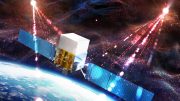
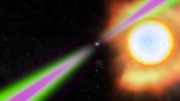
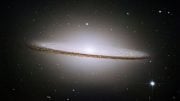

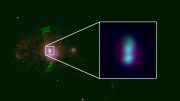
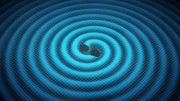
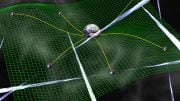
Be the first to comment on "Astronomers Use Pulsars to Listen for Gravitational Waves"